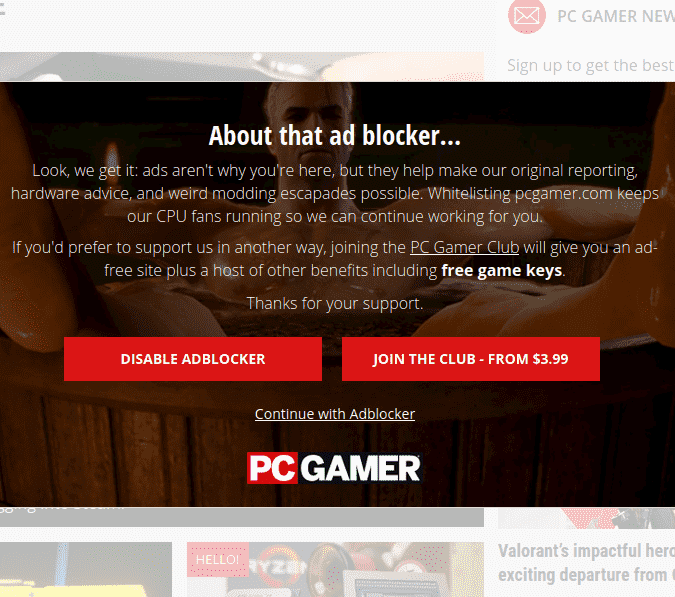In this post I’ll explain how to monetize a website, i.e. how to make money from your site. Everything written here is based on my knowledge and experience so far – I am no expert on the topic, but make some money from my websites.
Table Of Contents (T.O.C.):
- Introduction
- What is website monetization?
- Ethical aspects of website monetization
- The basics of website monetization
- Website monetization options
5.1. Charging for content viewing – membership sites
5.2. Showing paid adverts
5.3. Using affiliate links
5.4. Publishing paid “guest posts/articles” - Conclusion
- Bonus video – can you make money on YouTube?
1. Introduction
When I started my first “serious” website, in 2015, I had no idea that I’d ever be making any money from it. The idea was just to share my knowledge and make it easily available from anywhere. This was supposed to help the others, as well as myself, since I keep all my references and charts on line, on my websites. As it had turned out, this starting idea was very good in the long run, but more on that later.
Later, I started experimenting with various ways of website monetization and will share the (little) knowledge and experience I have in this post.
2. What is website monetization?
Website monetization means making money from a website. There are various ways to do that, as I’ll explain. They all basically boil down to showing adverts, in one way, or another, on your website.
Before we discuss the details, I’ll discuss something I find very important:
3. Ethical aspects of website monetization
Do you like adverts? I don’t like them in the least! This was my main objection when a wise friend suggested I start monetizing my websites.
As far as I’m concerned, adverts are OK if:
- They don’t get in the way of website contents – especially by jumping over the screen – regardless of whether the website is viewed over a smartphone, or a computer.
- They don’t deceive visitors – adverts must be clearly marked as such and they must really sell what they advertise.
Of course, everyone chooses what they like for their website, but for me, this was an important aspect and criteria.
Another aspect to consider is whether it is OK to make money from your website in the first place? My thinking is: since I’m offering good quality content, with information that can help people, completely free, I see no problem with making some money – especially if that doesn’t cause any interference with viewing the website contents. I’m not forcing anyone to look at my websites.
I’ll get back to some of these points in the remainder of this post, but this suffices for now.
Update:
My thoughts about newsletters and my website monetization.
4. The basics of website monetization
I already discussed the topic of this chapter, from a different angle, in the post about .com domain price hike. Starting from the very beginning on the monetization. In order to monetize, it helps if you have some sort of a brand, something that is yours. On the Internet, while you can’t really buy a domain (like bikegremlin.com), you are officially only renting a domain name, it is as close as you can get to “owning your place on the Internet”.
Of course, you could monetize a YouTube channel, or a website set up as a subdomain of wordpress.com, or Blogger (see the difference between wordpress.com and wordpress.org). But in that case, it is still the ownership of another company and they have a total control and the final say. Having your own domain is as good as it gets in terms of being as independent as possible.
5. Website monetization options
There are three basic ways of website monetization:
- Charging visitors for seeing the website contents – membership sites.
- Showing paid adverts.
- Using affiliate links.
- Publishing paid guest articles.
I’ll now explain each of those, separately:
5.1. Charging for content viewing – membership sites
If your website is such that people are willing to pay for seeing some (or all) of the website contents, this could be a way to monetize it. Visitors are usually required to pay some sort of (monthly) subscription and then get an account, so they can log in and see the contents they wouldn’t be able to see otherwise.
Some monthly and daily newspapers use this monetization method.
Tech savvy users might be able to see the content even if you put it “behind a paywall”, depending on your implementation, but for 99.9% of the visitors, it will work effectively.
For those using WordPress, a plugin that allows this is called Ultimate Member.
The potential downside of such monetization is that people must be prepared to pay for your content. So you need good recommendations, and/or good quality free content – offering even better, or more detailed/specific content for paid members.
Upside of this monetization method is that your income is in line with the number of visitors (no one views for free). Having many visitors usually ask for better website optimization and better, more expensive hosting servers, so it helps if higher income (out)matches greater expenses.
Alternative could be putting loads of ads on your website, enabling the paid subscribers to see the contents without the adverts.
The first example of this alternative approach that comes to mind is YouTube (link to my YouTube channel). They put ads between, or even in the middle of videos, interrupting them, unless you pay their subscription fee.
The downside of this model is that many people will just put up with the annoying ads, or use AdBlocker browser add-ons. More on add blockers in the next chapter.
Another example of this is BikeGremlin consulting page. I give free advice via my website comment section, but for those who want “live” communication, or fast response, I charge for each 30 minutes. The positive side of this is that only those who really need help (and are willing to pay) call me, not those who won’t bother “to Google”. This leaves me enough time to help those who really need help.
Update:
In 2023, I’ve built the BikeGremlin forum. There are people who really need help, but don’t have any money. The few minutes needed to create a forum account seems like a fairer “filter” compared to asking for money.
5.2. Showing paid adverts
There are services for automated advert placing on your website. The most popular is Google AdSense. For more details, see my Google AdSense experiment, my Setupad (an AdSense alternative) experiment, as well as my Mediavine experience/review.
Also, if your website is of good quality and has a lot of visitors, various companies might start asking you for advertising on your website. Or you could offer advertising space on your website to companies (advertising policy on my cycling website).
To prove the number and quality of your website visits (age, visit duration etc.), Google Analytics can be used (how to set up Google Analytics for your website).
Adverts are usually paid per view, but if a visitor clicks on an ad, it pays a lot more.
The first potential “catch” with this kind of website monetization is your content: if it is in any way controversial, you are likely to be denied by AdSense and similar programs, while most companies will also not wish to advertise on your site. For this reason, I don’t even consider placing ads on my casual personal blog – its contents are far from useful and are quite controversial (psychiatrists are more likely to make use of it, than advertising companies 🙂 ).
Update – October, 2022:
The blog has grown with some good articles, and it is now being monetized as well.
The advantage of using advertising services is that ads display is automated – you needn’t worry about making contracts with companies who wish to advertise on your website. You just get your share of the income. And Google at least does a good job of showing visitors the adverts that are of interest to them (talk about privacy intrusions). The downside is that the service takes a lion’s share of the adverts income – you just get a percentage from their profit (Google lets you keep about 60-70 %).
Now, depending on how the adverts display is implemented, you might run into problems with AdBlockers. Automatically displayed ads (like Google AdSense) are very susceptible to this. If a visitor views your site with AdBlocker browser add-on, you won’t get any income, because ads won’t be shown to the visitor.
How to avoid AdBlocker problems?
Website can be configured to detect AdBlockers. For WordPress websites, there are anti-AdBlocker plugins (I haven’t used any, for reasons explained later in this text, so don’t know which ones are good). Once an AdBlocker is detected, there are three ways to handle it:
- Do nothing – in which case having AdBlocker detection can be used only for information / statistics.
- Visitor notification – you can have your website notify the visitor that you are using the ads to support your efforts and politely ask them to whitelist your website (disable their AdBlocker for your domain). The note can be placed in the corner of the screen (or at the top, or the bottom), containing a link with AdBlocker whitelisting instructions and be easily closed.
- Aggressive approach – blocking the display of your website’s contents until the AdBlocker is disabled (the website whitelisted). Of course, tech. savvy visitors can relatively easily go around this (disabling JavaScript in their browser), but it will work for about 99.9% of the visitors.
An example of a sort of a combination of the 2nd and 3rd approach (entire page display is blocked, but there is a small option at the bottom to keep viewing the website with AdBlocker enabled):

Picture 1
I don’t have any relevant statistics, but I know many people who are annoyed with any kind of “disable AdBlock” notes (this includes me). Especially if they are aggressive (3rd approach). Though I make sure to whitelist websites that I like and visit regularly (those don’t have too many ads shown over the content). At the same time, I’m convinced that of all the people using AdBlocker, maybe 1 in a 1000 remember to whitelist the “cool websites”.
One of the things that AdBlockers (can) do is block any other trackers – so the privacy concerned visitors sleep better with AdBlocker enabled.
My stance on this can be seen on this website – I’m using AdSense, but have no notification related to the use of AdBlockers (nor AdBlocker detection for that matter). Then again, some of the websites I like have, at least for some time, used AdBlocker notifications.
5.3. Using affiliate links
What is an affiliate link? It is a link to a product. If a website visitor clicks on an affiliate link on your website and buys the product, you get a small commission, while the price stays the same (or lower) for the visitor. The most popular is Amazon’s affiliate program (explanation why BikeGremlin uses Amazon affiliate links).
The advantage of affiliate links is they are “immune” to AdBlockers. Because they are just links, or images with links, on your website. For example, here’s my Amazon affiliate link for Cooler Master Masterkeys Pro S keyboard (far from the best I’ve tried – not recommending it 🙂 ). You could also use an image with the affiliate link (just make it more representative than this one, if you want people to click on it and buy anything 🙂 ):

Picture 2
For affiliate links to make sense, people must have faith in your knowledge, experience and recommendations. In other words: if you get asked “what should I buy”, then your website is perfect for using affiliate links. But be careful: reputation is gained slowly, over a long period of time, and lost quickly and easily.
On that account, I must say that the keyboard above is practically useless without a good palm rest that is bought separately (or you make one yourself). The picture shows Cooler Master Wrist Rest (Amazon affiliate link) – for the keyboard shown above, you’ll need one in size Small (it’s not the best I’ve tried, I would not recommend it).
This shows another aspect of affiliate links – they must clearly be marked for what they are. No one likes being tricked. Also, as I wrote in the post explaining SEO, affiliate links should be “nofollow”.
Another advantage of using a system like Amazon is that they are very good at selling stuff. Even if the visitor doesn’t end up buying the product you had recommended, they are likely to buy something – and Amazon gives you a commission even then (though smaller).
With a note for any readers from Serbia (and other countries for which Amazon doesn’t offer direct bank deposit of commissions) – this is what cashing an Amazon check in Serbia looks like.
5.4. Publishing paid “guest posts/articles”
A company can offer you money to publish an article on your website. Some wish to write articles themselves, or at least to confirm that the article you wrote is praising their products/services properly. Like some sort of paid reviews and similar articles. This is probably best used in combination with affiliate links.
As I said, they can offer to write an article for you, with affiliate links to their products. This can be useful if you don’t wish to bother writing content for your website (company pays a freelancer to write an article and you publish it).
My websites are informative, so I welcome publishing content for free. However, my criteria is so high that no one wants to bother. 🙂 In other words – when I say that I’ll publish a post for free, but only if it is as good and detailed as other posts on my website, they usually give up. For example, here’s a link to a guest article (so far the only one) explaining bicycle winter storage, and then link to my article explaining only bicycle indoor storage, without even touching the “winter preparations” topic. On the other hand, on this (IT related) website, here’s an example of a decent quality guest post – on mobile phone navigation and tracking.
First and only guest post was published because when asked I had replied that I will publish any good article that covers a topic I haven’t covered on the website. I didn’t note that my criteria is very high and even if the article isn’t good enough to be published, I’m planning to write on the topic sooner, or later, so no hard feelings over a “stolen idea”. So, without having provided that disclaimer, I thought it was only fair to publish the article – it is far from bad, someone did make an effort to write it. It also serves as a reminder to be careful what you promise (and I’ve revised my guest posting policy after that, to make it more clear).
This long-winded talk about me & my websites has a point – the danger of guest articles: they can affect website content quality and its reputation/credibility. So you should be careful if doing any paid reviews. If you let money influence your product/service description once, people will no longer trust you.
6. Conclusion
Website monetization, especially if not done “at all costs”, i.e. at the cost of quality and credibility, can be a phenomenal thing. In this post I explained the most popular ways of website monetization, noting the pros and cons of each. Everyone will choose by and for themselves which option is best for them. Or go with several options – because one does not exclude the others.
Whichever monetization method (or methods) you use, and no matter how good your content is, the moment you start using ads, or affiliate links, someone, sometimes will accuse you of shilling. You have to accept that and not worry about it too much. There are many websites with poor quality content, and/or bribed-paid reviews, so people are quite wary when they see a monetized website. And you will be facing those prejudice from time to time. Is it worth it? Everyone must judge and decide for themselves.
As always, any additions, constructive criticism and Patreon donations are more than welcome. 🙂
7. Bonus video – can you make money on YouTube?
My video discussing how and whether you can make money on YouTube (I also discuss the YouTube algorithm):


just wanted to point out that, contrary to what might have been true once, your personal blog does have ads now 😛
Yes – it’s automated now and the advertising company I work with (Mediavine) are fine with it.
Though it’s fair to say that the blog has grown with a few good-quality articles, since the time this article was first published.